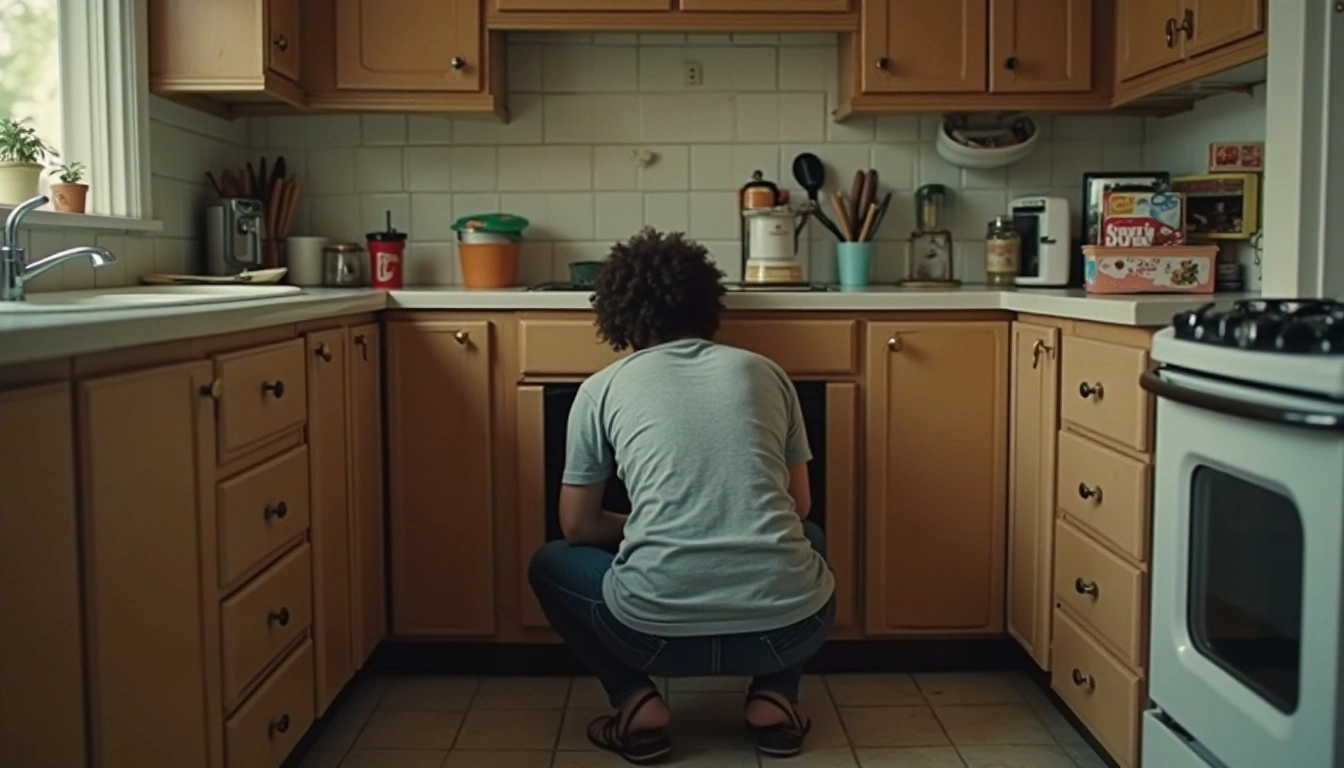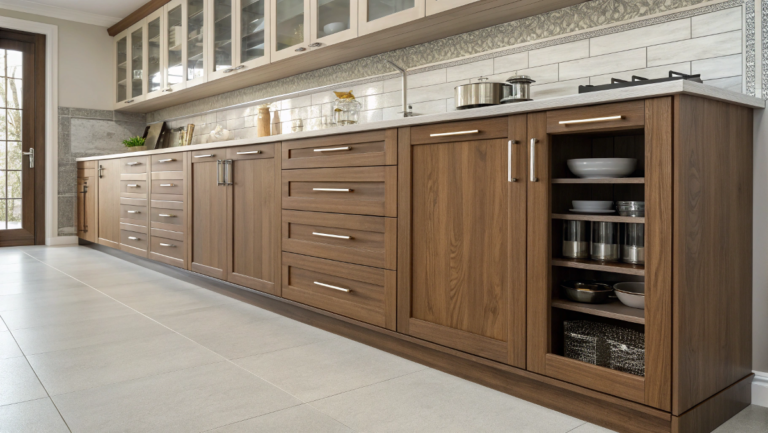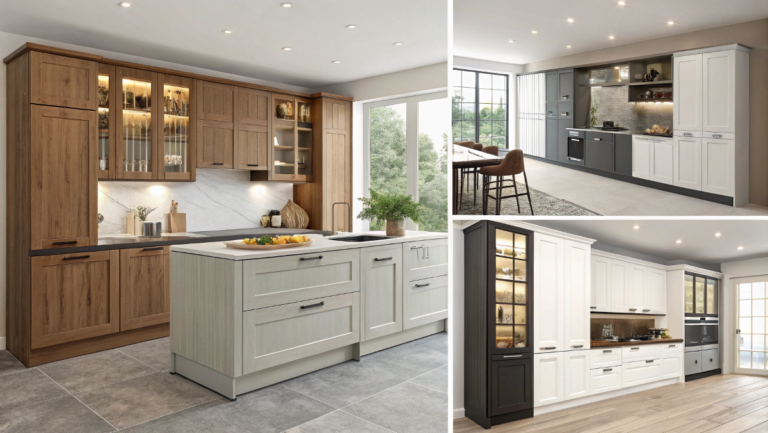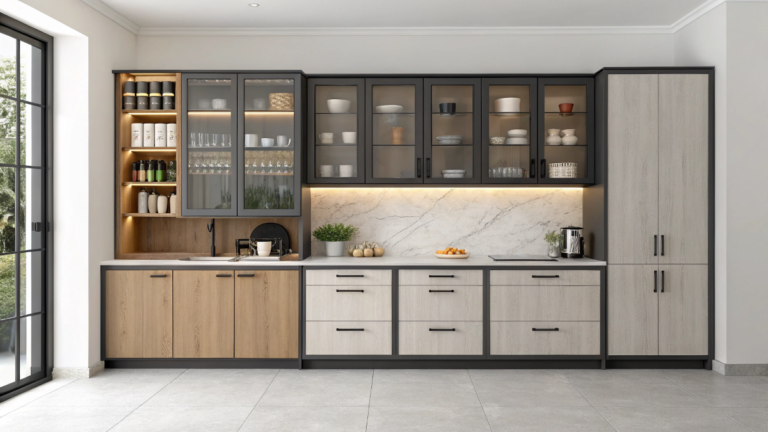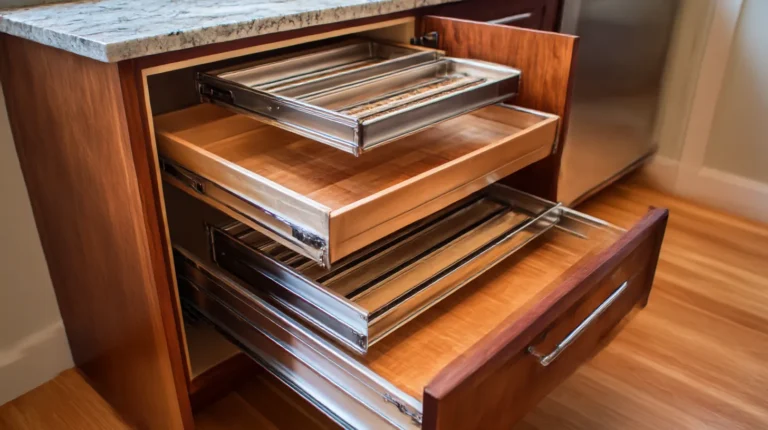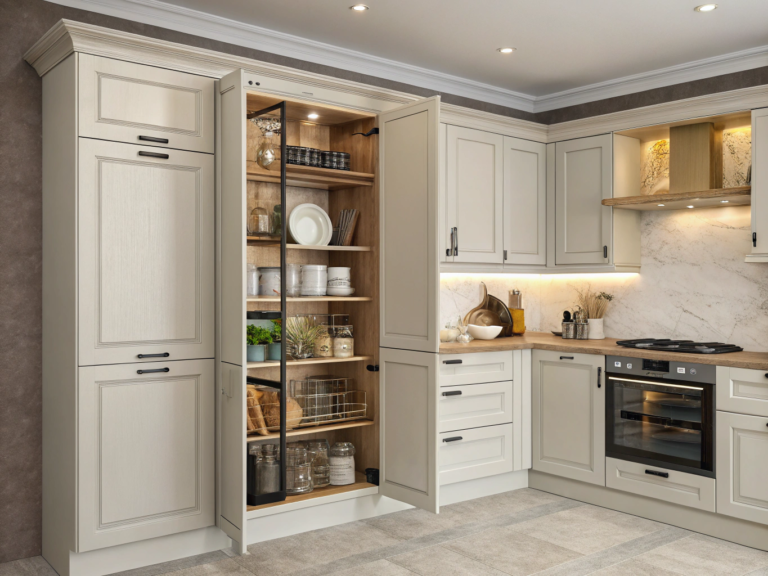What Is a 36 Kitchen Base Cabinet with Drawers?
Let’s be honest: most people don’t think twice about their lower kitchen cabinets—until they live with bad ones. That’s usually when the frustration kicks in. Doors that swing out too far. Shelves that bury everything behind other stuff. Or worse: that awkward corner you never fully open because… what’s even in there?
That’s where a 36-inch kitchen base cabinet with drawers starts to make real-world sense. It’s not just another piece of cabinetry—it’s a design choice that reshapes how your kitchen feels to live in. With three wide drawers stacked vertically, it’s built for people who actually cook, actually clean, and actually want to find their damn measuring spoons without a treasure hunt.
And yet, not everyone knows this kind of cabinet exists—let alone why it’s becoming a quiet favorite in kitchen remodels.
In this article, we’ll unpack:
-
Why drawers beat doors in most day-to-day scenarios.
-
How the 36-inch width solves more problems than you’d expect.
-
What “shaker style” really means (and why designers swear by it).
-
Where this cabinet fits best—and where it might not.
If you’re planning, dreaming, or even halfway through a remodel, this might be the one cabinet that makes the biggest difference… even if no one notices it at first.
Understanding the 3-Drawer Base Cabinet Design
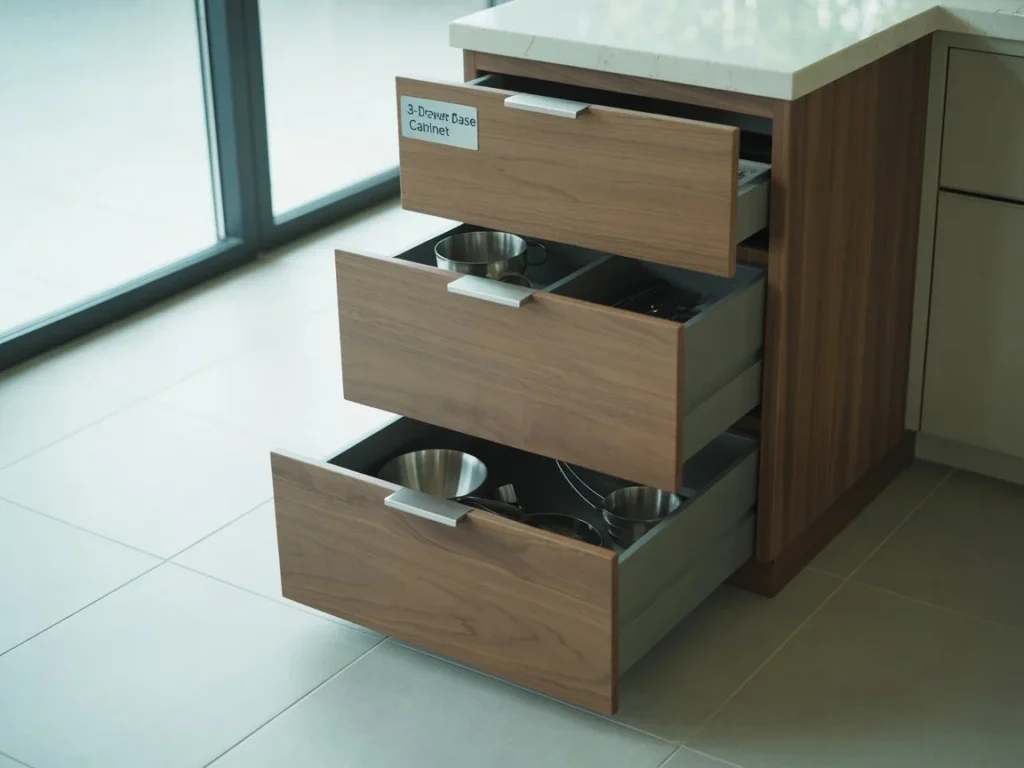
At first glance, a 3-drawer base cabinet might not look that different from any other kitchen unit. But once you live with one, the difference is immediate—and hard to go back from. Unlike standard door-and-shelf setups, this design turns vertical cabinet space into structured, layered access. You don’t just open it; you use it more efficiently.
Let’s break it down.
The top drawer? That’s your go-to. Silverware, prep tools, measuring cups—all the little things that somehow vanish when you need them. Middle drawer? Perfect for mixing bowls, plastic containers, or those oddly-shaped gadgets that never sit right anywhere else. And the bottom drawer? Deep enough for pots, pans, or even small appliances like a blender or food processor. No stacking, no digging—just slide and grab.
This layout works especially well in the context of:
-
Daily cooking: fewer movements, faster prep.
-
Shared kitchens: easy access for everyone, no doors in the way.
-
Smaller kitchens: more usable storage in less square footage.
What’s subtle—but important—is how this format aligns with how people actually cook. Most kitchens are designed around form or resale value. This one is designed for flow. You move differently when your tools are where you expect them, every time.
Why Shaker Style Matters in Modern Kitchen Design
I’ll admit it—when I first heard “shaker cabinets,” I thought of something outdated. Like, wood-paneled kitchens from the 90s. But once I actually saw them in a well-designed space, it clicked: they don’t scream style, but they anchor a kitchen better than most trendy designs ever could.
Shaker style is all about balance. It’s structured, but not stiff. Clean, but not cold. That simple frame-within-a-frame look? It manages to work whether you’re going for warm and rustic or clean and contemporary. There’s a weird kind of design neutrality in it—it doesn’t take over the space, but it never feels underdressed.
And then there’s the history. You don’t have to care about early American craftsmanship, but there’s something kind of grounding in knowing this cabinet style was born out of practicality. No fluff, no show—just something built to last. That intent is still visible, even when it’s made in a modern factory and shipped flat-packed.
What surprised me the most was how shaker fronts looked on wide drawers. I thought maybe they’d feel too plain. But the opposite happened—they made the cabinet look intentional. Like someone thought about it, not just filled a gap.
Isn’t shaker too plain for a modern kitchen?
Honestly, it depends what you mean by modern. If you’re looking for high-gloss lacquer or ultra-minimal slab fronts, shaker might feel too warm. But for most people, it hits the sweet spot—modern enough to feel current, classic enough to age well.
H2 Is 36 Inches the Ideal Cabinet Width?
Here’s something no one tells you when you’re planning a kitchen: width matters more than you think—especially at the base level. A 36-inch cabinet might sound arbitrary, but once you lay it out on paper (or tape it out on the floor), it starts to make sense in a way smaller units just don’t.
Thirty-six inches is wide—but not awkwardly wide. It’s enough room to store big pots, tall stacks of dinner plates, or even a stand mixer without cramming. But more importantly, it gives you flexibility. With three drawers, each one spans the full cabinet width, which means fewer dividers, fewer blind spots, and more open real estate for your stuff to live where it’s actually useful.
I’ve seen kitchens full of 24-inch cabinets—and they work, technically. But they also multiply the number of places you have to look for things. More doors, more breaks in the visual line, more organizational chaos. A single 36-inch cabinet can often do the job of two smaller ones, without doubling the clutter.
There’s also this: when you’re working in a medium to large kitchen layout, 36 inches tends to align better with standard appliance widths and island dimensions. It just… fits. Like it was meant to be there.
When 36 Inches Might Not Work
There are exceptions, of course. In galley kitchens or tighter layouts, you might need to go smaller just to make traffic flow work. And if you’re working with modular prefab cabinets, 36 inches might limit how much you can customize interior fittings. But in most average-to-large kitchens? It’s the size you’d wish you’d picked after living in the space.
Is there a big difference between 30 and 36 inches?
Yes—and not just in inches. That extra half foot gives you enough space for double-stacked storage or wider items that just won’t fit in a 30-inch cabinet. It’s the difference between “it fits if I angle it” and “it fits, period.”
Ideal Placement & Use Cases for 3-Drawer Cabinets

Here’s where things get real: even if a cabinet looks great on a spec sheet, the question is—where does it actually belong in your kitchen? The beauty of a 36-inch 3-drawer base cabinet is that it’s not just flexible in what it stores, but also in where it fits.
One of the smartest placements? Right under a cooktop. That top drawer gives you instant access to utensils, spatulas, and thermometers—while the bottom two can hold pots, lids, or even cast iron pans. It turns the zone where you cook into a command center.
Another ideal spot? Next to the dishwasher or sink. You can dedicate drawers to clean plates, dish towels, and food storage containers—turning cleanup into a flow, not a scramble.
But maybe my favorite use? As part of a kitchen island. That 36-inch width gives it visual weight without dominating the island, and the drawers become the perfect catch-all for prep tools, wraps, baking gear—or the junk you need nearby but don’t want visible.
Real-Life Use Scenarios
-
Families: Bottom drawers are great for kid-accessible plates, lunch containers, or snack bins.
-
Minimalists: One cabinet can hold what three used to—ideal if you’re aiming for a cleaner layout.
-
Apartment/condo owners: Makes every inch count in smaller kitchens where multi-function is key.
What I’ve noticed in remodels is that people tend to add one of these and then immediately regret not adding more. It’s one of those cabinets that earns its keep fast.
Should I place this next to my oven or fridge?
Near the oven, yes. Near the fridge, not always. Fridges need air circulation and tend to work best with tall pantry-style cabinets flanking them. A drawer base works better in cooking zones or prep areas—anywhere you’re moving fast and want everything at your fingertips.
Drawer Storage vs Door Cabinets: Which Is Better?
Here’s a question most people don’t ask until they’ve already chosen wrong: Should I go with drawers or doors? On paper, doors feel traditional. Familiar. Like the “default” cabinet. But if you’ve ever crouched down to reach the back of a shelf—only to pull out something dusty you forgot you owned—you already know the answer.
Drawers win. Almost always.
With drawers, everything comes to you. There’s no need to dig, no awkward reach, no moving three pans to get to the one you actually need. You open a drawer and your stuff is just… there. Visible. Sorted. Accessible. It’s not revolutionary—it’s just the thing no one thinks about until they’ve lived with both.
Now, that’s not to say drawers are perfect. They’re often a bit pricier. And if you overload them or cheap out on the hardware, you’ll feel it. A sagging drawer full of plates is nobody’s idea of progress.
But when done right—like in a solid, 36-inch 3-drawer base—they’re game-changers. You get structure, segmentation, and a kind of visual simplicity that shelves just can’t deliver.
When Doors Might Still Make Sense
If you’re storing tall items like pitchers, oversized baking dishes, or large bins, doors give you more vertical clearance. They also allow for adjustable shelving, which some people swear by. And if you’re replicating a period-style kitchen, drawers might look out of place visually.
But even then? You’ll probably still want at least one deep drawer base. Just to see what you’re missing.
Are drawers harder to install or maintain than cabinet doors?
Not really. Most drawer bases today come pre-assembled or with guided hardware that makes install fairly straightforward. As for maintenance—drawer slides might eventually need tightening or replacement, but so do door hinges. If anything, drawers wear more predictably.
Common Questions About 3-Drawer Shaker Base Cabinets
Even when a cabinet looks like the perfect fit, buyers usually pause right before the click. Why? Because a few lingering questions always hover: Will it hold up? Will it actually fit? Will it look right in my space? Below are the most common questions that come up with 36-inch, 3-drawer Shaker-style base cabinets—and real, practical answers.
Can I install this cabinet myself?
Technically, yes—if you’re comfortable with leveling, anchoring to studs, and adjusting drawer alignment. But there’s a catch: a 36-inch cabinet is wide and heavy, which makes solo installation tricky. You’ll want at least a second set of hands, a good level, and time to get it flush with neighboring units. If precision isn’t your strong suit, hiring a pro might save you more than it costs.
How much weight can the drawers hold?
That depends on the quality of the slides. Standard side-mount slides typically hold 50–75 lbs per drawer, while heavy-duty undermounts can push 100+ lbs. A fully loaded bottom drawer of pots and pans? Totally doable—just make sure you’re not skimping on materials or hardware.
Are the drawers soft-close?
More often than not, yes—especially in newer models. But always double-check the spec sheet. Some budget options skip soft-close hardware to cut costs. If it’s not included, soft-close kits can be added after the fact (though it’s easier to install them during assembly).
Will the Shaker style look dated in 5–10 years?
Unlikely. The whole point of Shaker design is its timelessness. It’s simple, geometric, and has proven itself over literally hundreds of years. Unlike hyper-modern gloss cabinets or overly ornate traditional ones, Shaker blends in—quietly and confidently—with whatever style you evolve into.
Final Thoughts: Is the 3-Drawer Shaker Base Cabinet Right for You?
Here’s the thing: kitchens aren’t built from Pinterest boards or showroom photos—they’re built from daily habits. From the way you chop onions. The way your kid opens the wrong drawer every single time. The way that one cabinet door never quite shuts flush.
And that’s where the 36-inch 3-drawer shaker base cabinet quietly delivers. It’s not trying to impress anyone. It’s not showy. But if your goal is a kitchen that feels easier to live in—not just prettier to look at—this cabinet earns its spot.
It gives you depth without clutter. Width without waste. Style without drama. And when you pair its usability with the clean, ageless look of shaker design, you end up with something that doesn’t just fit your kitchen—it improves it.
But to be fair: this cabinet isn’t for everyone. If you love open shelving or you’re going ultra-minimalist with barely-there hardware, it might feel a touch traditional. And if your layout just doesn’t have the space for 36 inches, forcing it in can backfire.
Still, if you’re looking for one cabinet that pulls more than its weight—for storage, layout flow, and everyday sanity—this one deserves a spot in the blueprint.

